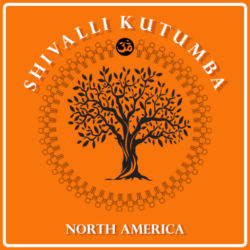Happy Deepaavali !
We pray Lord Shri Krishna at Shri Krishna Vrundavana to bless you and your family on the auspicious occasion of DeepaavaLi.
Deepavali signifies Festival of Lights. The word denotes grouping of lights. Deepa meaning light, AvaLi meaning group.
Light represents Shri MahaLakshmi and the characteristics of the Goddess – Knowledge and Prosperity.
When and how should we celebrate Deepavali?
In an English Calendar Year, the four months, usually between July to October / November are called Chatur Maasa. In the traditional vedic calendar these months represent Aashaada Maasa Shuddha Ekadashi to Kaarthika Shuddha Dwaadashi.
Many festivals occur during the Chatur Maasa Period – NagaPanchami, Upaakarma, Shri Krishna Janmashtami, Ganesha Chaturthi, Mahalaya, Navaraatri, Vijayadashami, Deepavali, and TulasiVivaha.
Deepavali festival comes in the middle of Chaathurmaasya. Scriptures say that in the Chathurmasya the Supreme Lord Shri NaaraayaNa will do Yoga-Nidra, appearing to sleep, misleading undeserving demonic souls.
Chaaturmaasya will end on the day of Utthana Dwaadashi. This signifies Lord NaaraayaNa awakening (utthAna) from Yoga-Nidra. Before Lord NaaraayaNa, Shri Lakshmi Devi will wake. The symbolic representation of this is the lighting of lamps, which is Deepavali.
Lakshmi Devi is the controller of triguNaas (multiple facets) which cover us with ajnana (ignorance).’ Just as light eliminates darkness, Lakshmi Devi will eliminate all our ajnana’ when prayed to along with NaaraayaNa. Therefore by lighting lamps we welcome Lakshmi Devi to remove our ‘ajnana’ and bless us with health, wealth, and all our needs.
On Thrayodashi, the first day of Deepavali, ( Sunday, October 23rd , 2022 in the USA ) we have to keep a lamp facing the South direction outside the home. We have to pray to Yama for eliminating Apamrutyu (sinful deaths) and to bless us. On this day we decorate the bathing room and pray to Ganga and other river goddesses to sanctify the water for our next day’s Holy Bath – Pavitra Snaana.
On Naraka Chaturdashi, the second day of Deepavali, (Monday, October 24th in the USA) we must wake up early in the morning, do Namaskaaraa (Pray) to all elders and seek Blessings. And everybody should have Thaila Abhyanga (oil bath) at Muhurtha (moon rise).
The oil bath signifies removal of sins and poverty. This is the day Lord Shri Krishna vanquished the demon Narakaasura to free his prisoners.
Amavasya, the third day of Deepavali is the day for Lakshmi Pooja. ( Monday, October 24th in the USA in the USA) In the night we light lamps all around the house and pray to Shri Lakshmi Devi along with Lord NaaraayaNa.
Prathama, the fourth day of Deepavali ( Tuesday, October 25th) is the day for Go-Pooja (Cow) and Bali Pooja. On this day Lord NaaraayaNa took Vaamana and Trivikrama Roopa (incarnation) and blessed the King Bali Chakravarthi.
This is also the day the Goddess Ganga took birth when Lord Trivikrama’s foot hit BrhamaanDa Talpa. As a result of Bhageeratha’s prayathnA Ganga flowed down to Earth from Swarga lokaa via Lord Shiva’a hair locks.
From Prathama ( Oct 25th) to Utthana Dwaadashi (Nov 5th) , the last day of the festive season we do daily Tulasi Pooja and pray to Keshava and the other 12 Roopas of the Lord for 12 days.
On Utthana Dwaadashi, we perform Pooja to Tulasi and Daamodara, a form of Narayana. This is the wedding day of Tulasi and Kaartika Daamodara. (Nov 5th)
Deepavali thus culminates with Utthana Dwaadashi, the awakening of the Lord.
By celebrating all these traditional festivals our lives become meaningful, and in accordance to our faith and devotion we receive blessings from the Lord. The festival period is an opportunity for us to perform Sath-Karmas, Dharma, Vrata and penances for all Satwika Jivas.
~ Yogeendra Bhat Uli
